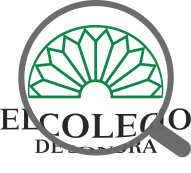Agrodiversidad y nutrición en Yucatán: una mirada al mundo maya rural
| dc.audience | generalPublic | |
| dc.contributor.author | Becerril, Javier | |
| dc.coverage.spatial | MX-SON | en-US |
| dc.creator | Becerril Garcia, Javier;#0000-0003-3785-1469 | |
| dc.date | 2013-09-01 | |
| dc.date.accessioned | 2022-06-28T19:42:29Z | |
| dc.date.available | 2022-06-28T19:42:29Z | |
| dc.date.issued | 2013-09-01 | |
| dc.description.abstract | The use and development of agrobiodiversity give genuine continuity to the conservation of in situ genetic diversity and its knowledge, as well as generating positive externalities in terms of nutritional wellbeing. In rural areas ofYucatan, seven out of ten adult men and women are overweight, and 20 out of 100 infants have short stature, which translates into a dual public health problem that slows rural development. The article discusses the paradox between the availability of extensive agricultural diversity and overweight in 390 rural households in 20 locations, distributed among the seven regions of Yucatan. The indings reveal that adult women are most prone to obesity, but the condition of being Maya (speaking the Mayan language and identifying as such, in addition to maintaining customs of the culture), is a situation that suggests a reduction in the rate of overweight and obesity, which can be argued is due to the customs in the consumption and management of agrobiodiversity. | en-US |
| dc.description.abstract | El uso y aprovechamiento de la agrodiversidad dan continuidad de facto a la conservación de la diversidad genética in situ y a su conocimiento, y generan externalidades positivas en términos de bienestar nutricional. En las áreas rurales de Yucatán, siete de cada diez hombres y mujeres adultos presentan sobrepeso, y veinte de cada cien infantes tienen talla baja, lo que se traduce en un problema dual de salud pública, que aminora el desarrollo rural. En el artículo se analiza la paradoja entre la disponibilidad de diversidad agrícola amplia y el sobrepeso en 390 hogares, en 20 localidades rurales, en las siete regiones de Yucatán. Los hallazgos revelan que las mujeres adultas son las más propensas a la obesidad, pero la condición maya (hablar lengua maya e identificarse como tal, además de mantener usos y costumbres de la cultura) sugiere una reducción en el índice de sobrepeso y obesidad, lo que se puede argumentar se debe a los usos y costumbres en el consumo y gestión de la agrodiversidad. | es-ES |
| dc.format | application/pdf | |
| dc.identificator | 5 | |
| dc.identifier | https://regionysociedad.colson.edu.mx:8086/index.php/rys/article/view/126 | |
| dc.identifier | https://doi.org/10.22198/rys.2013.58.a126 | |
| dc.identifier.uri | https://regionysociedad.colson.edu.mx:8086/index.php/rys/article/view/126 | |
| dc.identifier.uri | https://doi.org/10.22198/rys.2013.58.a126 | |
| dc.identifier.uri | https://repositorio.colson.edu.mx/handle/2012/45558 | |
| dc.language.iso | spa | |
| dc.publisher | El Colegio de Sonora | es-ES |
| dc.relation | https://regionysociedad.colson.edu.mx:8086/index.php/rys/article/view/126/299 | |
| dc.rights | Derechos de autor 2017 Javier Becerril | es-ES |
| dc.rights | https://creativecommons.org/licenses/by-nc/4.0/ | es-ES |
| dc.rights | info:eu-repo/semantics/openAccess | es-ES |
| dc.source | 2448-4849 | |
| dc.source | 1870-3925 | |
| dc.source | región y sociedad; Vol. 25 No. 58 (2013): September-December | en-US |
| dc.source | región y sociedad; Vol. 25 Núm. 58 (2013): septiembre-diciembre | es-ES |
| dc.subject | Economic change | en-US |
| dc.subject | Agrobiodiversity | en-US |
| dc.subject | Nutrition | en-US |
| dc.subject | Mayan | en-US |
| dc.subject | Rural.| | en-US |
| dc.subject | Cambio económico | es-ES |
| dc.subject | Agrodiversidad | es-ES |
| dc.subject | Nutrición | es-ES |
| dc.subject | Maya | es-ES |
| dc.subject | Rural | es-ES |
| dc.subject | Ciencias Sociales | |
| dc.subject.lcsh | Economic change | en-US |
| dc.subject.lcsh | Agrobiodiversity | en-US |
| dc.subject.lcsh | Nutrition | en-US |
| dc.subject.lcsh | Mayan | en-US |
| dc.subject.lcsh | Rural.| | en-US |
| dc.subject.lcsh | Cambio económico | es-ES |
| dc.subject.lcsh | Agrodiversidad | es-ES |
| dc.subject.lcsh | Nutrición | es-ES |
| dc.subject.lcsh | Maya | es-ES |
| dc.subject.lcsh | Rural | es-ES |
| dc.title | Agrodiversidad y nutrición en Yucatán: una mirada al mundo maya rural | es-ES |
| dc.type | info:eu-repo/semantics/article | |
| dc.type | info:eu-repo/semantics/publishedVersion |




